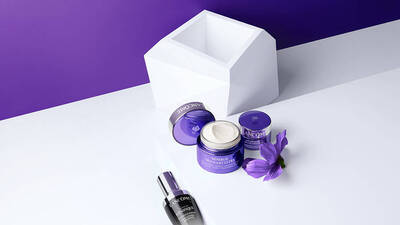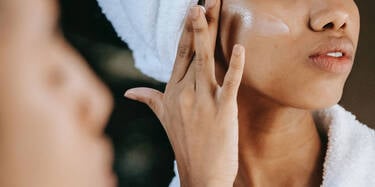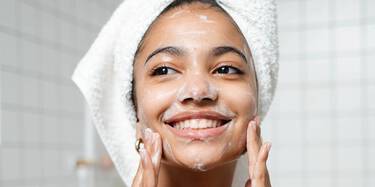Serum Or Moisturiser First? Know What’s The Difference And How To Use Them Together

Navigating the world of skincare can sometimes be confusing, especially when it comes to choosing the right products for your skin. Two of the most commonly discussed products are serums and moisturisers. While both play an essential role in maintaining healthy skin, they serve very different purposes. In this blog, we'll break down the difference between serum and moisturiser, explain if you should use a serum before or after moisturiser, and discuss the ingredients you should be looking for to get the most out of your skincare routine.
Difference Between Serum & Moisturiser
Serums and moisturisers are often mistaken for each other due to their common goal of nourishing the skin, but they are quite different in terms of texture, formulation, and function. Read ahead to learn more about serum vs moisturiser.
- Serum
A serum is a lightweight, fast-absorbing liquid or gel that contains a high concentration of active ingredients. Serums are designed to penetrate deep into the skin to target specific concerns like fine lines, dark spots, acne, or dehydration. Because they have smaller molecules and are packed with potent ingredients like vitamins, antioxidants, and peptides, serums can effectively deliver active ingredients where they are needed the most.
- Moisturiser
A moisturiser, on the other hand, is designed to hydrate the skin by forming a barrier that locks in moisture. It typically contains ingredients like oils, emollients, and humectants to keep the skin soft and hydrated on the surface. Moisturisers focus on preventing water loss from the skin, keeping it plump and supple, especially when exposed to environmental stressors like dry air or pollution.
In summary, while a serum treats skin concerns at a deeper level, a moisturiser works on the outer layer to maintain hydration and protect the skin’s barrier.
What To Apply First?
When it comes to layering skincare products, one of the most common questions is: "Do you use serum or moisturiser first?" The general rule of thumb is to apply products from the lightest consistency to the heaviest, which means serum should always be applied before moisturiser.
Why Serum First?
Serums are lightweight and packed with active ingredients that need to penetrate the skin to work effectively. Applying a serum before your moisturiser ensures these active ingredients reach the deeper layers of your skin without being blocked by the heavier texture of a moisturiser.
Moisturiser Comes Next
After the serum has been absorbed into your skin, applying moisturiser helps seal everything in. It forms a protective barrier that prevents moisture from escaping and keeps the active ingredients from the serum locked into your skin, allowing them to work throughout the day or night.
How To Use Serum & Moisturiser Together?
Using a serum and moisturiser together is one of the best ways to optimise your skincare routine, but it's important to apply them correctly to maximise their benefits. Here's how you can use both products effectively:
- Step 1: Cleanse Your Face
Start by cleansing your face with a gentle face wash to remove dirt, makeup, and impurities. This prepares your skin for the next steps.
- Step 2: Apply Toner (Optional)
A face toner can help balance your skin’s pH levels and prepare it for better absorption of products. This step is optional but can help boost hydration.
- Step 3: Apply Serum
After cleansing (and toning, if desired), apply a few drops of antioxidant serum onto your skin. Gently massage it in using upward, circular motions. Wait for a minute or two to let the serum fully absorb into the skin before moving to the next step.
- Step 4: Apply Moisturiser
Once the serum has been absorbed, apply your moisturiser. Focus on areas that tend to be drier, such as around the nose or forehead, and make sure to blend it evenly.
- Step 5: Don’t Forget Sunscreen (Morning Routine)
If you’re doing your morning routine, always follow up with a broad-spectrum sunscreen to protect your skin from harmful UV rays.
Important Ingredients To Look Out For In Your Serum & Moisturiser
When choosing a serum and moisturiser, it’s important to look for ingredients that target your specific skin concerns. Here are some key ingredients to consider –
- Hyaluronic Acid: Found in both serums and moisturisers, hyaluronic acid is a powerful humectant that draws moisture into the skin, keeping it plump and hydrated.
- Glycerin: Another excellent hydrating ingredient, glycerin helps attract water to the skin’s surface.
- Vitamin C: Found in many skin-brightening hydrating serums, vitamin C helps reduce hyperpigmentation and protect the skin from environmental damage.
- Niacinamide: This versatile ingredient helps brighten the skin and improve its texture by reducing the appearance of dark spots and uneven skin tone.
- Salicylic Acid: This beta hydroxy acid (BHA) helps exfoliate the skin and clear out clogged pores, making it a great ingredient for acne-prone skin.
Incorporating both a serum and moisturiser into your skincare routine can greatly enhance the overall health and appearance of your skin. While serums target specific concerns at a deeper level, moisturisers focus on maintaining hydration and protecting the skin’s barrier. By understanding the difference between serum vs moisturiser, layering them properly and choosing products with the right ingredients, you’ll create a skincare routine that not only addresses your concerns but also keeps your skin glowing and healthy all year round.
So, without any further ado, browse through a wide range of Lancôme skincare products and add them to your skincare routine to achieve happy and healthy skin with ease. Additionally, you can also explore our skincare beauty magazine and learn more skincare tips from the comfort of your home.















